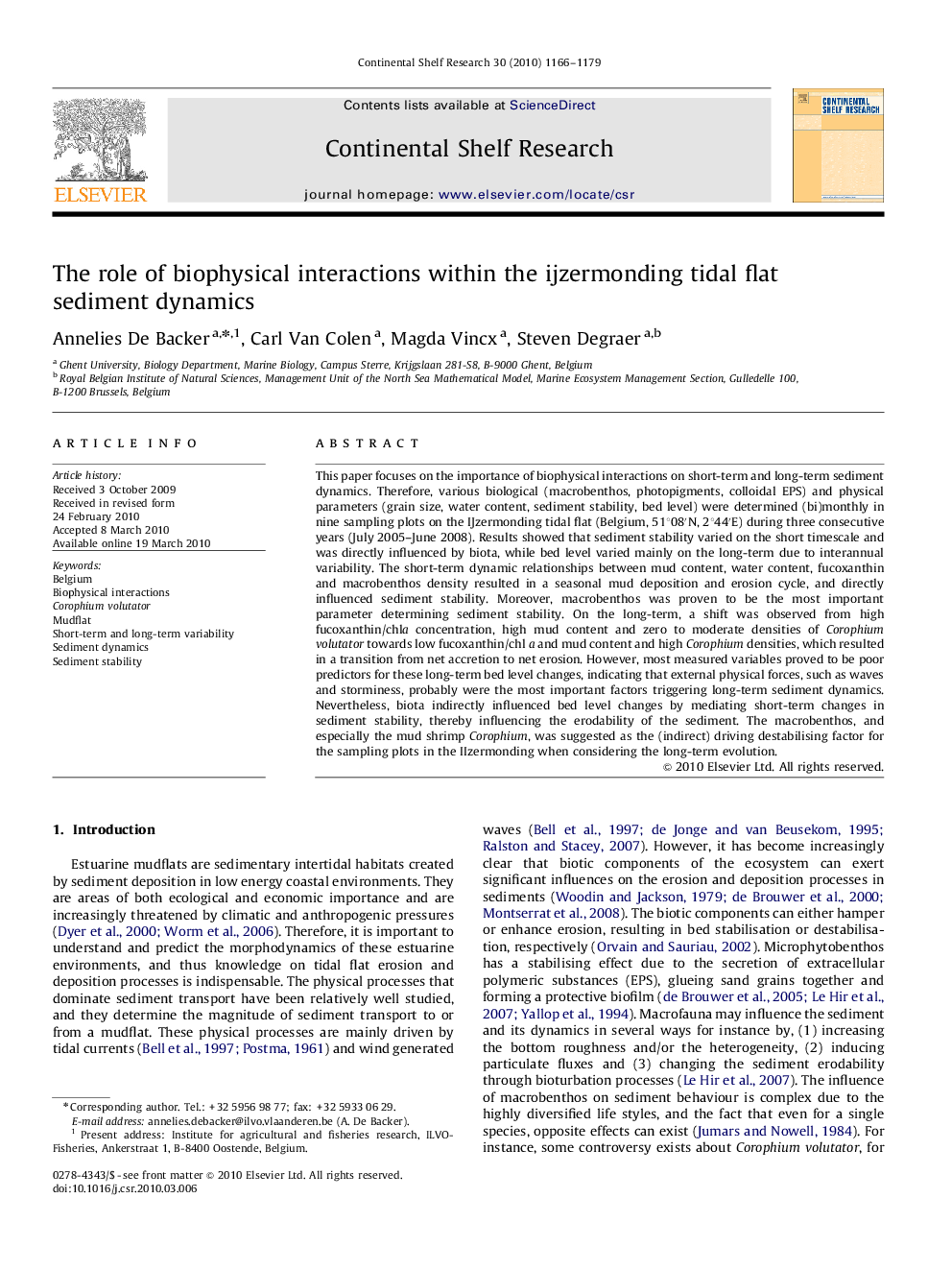| کد مقاله | کد نشریه | سال انتشار | مقاله انگلیسی | نسخه تمام متن |
|---|---|---|---|---|
| 4532900 | 1325155 | 2010 | 14 صفحه PDF | دانلود رایگان |

This paper focuses on the importance of biophysical interactions on short-term and long-term sediment dynamics. Therefore, various biological (macrobenthos, photopigments, colloidal EPS) and physical parameters (grain size, water content, sediment stability, bed level) were determined (bi)monthly in nine sampling plots on the IJzermonding tidal flat (Belgium, 51°08′N, 2°44′E) during three consecutive years (July 2005–June 2008). Results showed that sediment stability varied on the short timescale and was directly influenced by biota, while bed level varied mainly on the long-term due to interannual variability. The short-term dynamic relationships between mud content, water content, fucoxanthin and macrobenthos density resulted in a seasonal mud deposition and erosion cycle, and directly influenced sediment stability. Moreover, macrobenthos was proven to be the most important parameter determining sediment stability. On the long-term, a shift was observed from high fucoxanthin/chla concentration, high mud content and zero to moderate densities of Corophium volutator towards low fucoxanthin/chl a and mud content and high Corophium densities, which resulted in a transition from net accretion to net erosion. However, most measured variables proved to be poor predictors for these long-term bed level changes, indicating that external physical forces, such as waves and storminess, probably were the most important factors triggering long-term sediment dynamics. Nevertheless, biota indirectly influenced bed level changes by mediating short-term changes in sediment stability, thereby influencing the erodability of the sediment. The macrobenthos, and especially the mud shrimp Corophium, was suggested as the (indirect) driving destabilising factor for the sampling plots in the IIzermonding when considering the long-term evolution.
Journal: Continental Shelf Research - Volume 30, Issue 9, 31 May 2010, Pages 1166–1179